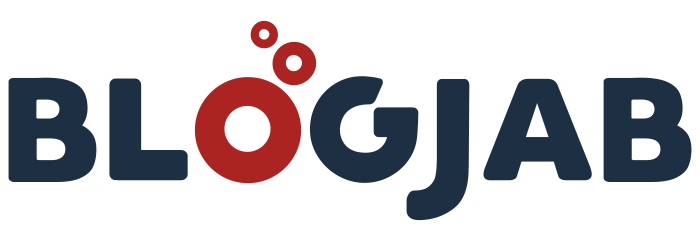Table of Contents
Introduction
In recent years, the role of a content management system (CMS) has undergone significant changes within the rapidly expanding digital ecosystem. Previously, a CMS was primarily seen as software that automated various tasks associated with content management and online publishing. These tasks included uploading content, formatting it for web pages, and enhancing SEO.
But, today, the modern content management system (CMS) plays an increasingly significant role in response to the widespread use of digital content, assets, channels, interfaces, and devices. Consequently, businesses need to reevaluate their CMS solutions and align them with a strategic customer experience strategy. Are you seeking more insights?
So, let’s discuss what CMS is in a nutshell. Continue reading!
What is a content management system (CMS)?
A content management system (CMS) is specialized software designed to enhance users’ ability to create, organize, deliver, and modify a wide range of digital content. As a result, this valuable tool encompasses the creation of blog posts, eBooks, press releases, guides, and more — all tailored for websites, mobile applications, portals, and other online platforms.
What’s more?
The global content management system market achieved a valuation of US$19.05 billion in 2022. Furthermore, forecasts indicate significant expansion, estimated at US$27.48 billion by 2028. This reflects a compound annual growth rate (CAGR) of approximately 6% from 2023 to 2028.
(Source: Globalnewswire.com)
Not to miss!
The leading CMS platforms, such as Adobe Experience Manager (AEM), Sitecore, Drupal, Kentico, and WordPress, simplify website development for users. Moreover, these content management systems (CMSs) eliminate the need for extensive coding knowledge. They also allow users to focus on creating content instead of dealing with technical complexities.
Since we now have an understanding of a CMS system, let’s talk about its features!
What are the features of a content management system?
Various essential features are offered by a content management system (CMS), ensuring efficient content management. These features encompass:
- The workflow can be streamlined through a user-friendly dashboard and interface, simplifying navigation and allowing for effortless access to key features. As a result, this enhancement ensures improved task efficiency.
- The deployment strategy should be tailored to meet your specific needs, whether you prefer on-premises, cloud-based, or hybrid solutions. Thus, this customization ensures flexibility and scalability as your requirements evolve over time.
- Robust security measures, such as encryption, authentication, and regular security updates, should be implemented to safeguard data and user information effectively. As a result, it ensures protection against potential threats and breaches.
- Users can access a wide range of comprehensive support resources to address any issues and receive assistance throughout their journey. Therefore, these resources include documentation, tutorials, and responsive customer support services.
- Lastly, the system can be customized and scaled to adapt to changing requirements. In addition, it offers high extensibility, allowing seamless integration of third-party plugins, modules, and features.
Having gone through the features above, let us now look at the advantages and limitations of the content management system.
What are the advantages and limitations of CMS?
A web content management system (CMS) offers a range of benefits, but they also have certain limitations. Consequently, to effectively manage content, it is crucial to understand these aspects. Hence, we will explore CMS’s advantages and limitations in the following discussion. Let’s begin by examining the advantages:
Advantages of CMS systems
In today’s fast-paced digital landscape, CMS solutions offer businesses a competitive edge by streamlining website management processes. Therefore, here are some of the specific examples:
- CMS systems enhance content delivery by managing multiple channels, improving efficiency and consistency throughout the distribution process. This multi-channel management is crucial in ensuring streamlined operations and maintaining a cohesive brand presence across various platforms.
- CMS solutions improve user-friendliness by simplifying content management. As a result, this enables users to concentrate on creating valuable content instead of struggling with complex tools.
- CMS systems empower organizations to collect and analyze data, revealing patterns and offering in-depth insights into user behavior. Moreover, this valuable understanding assists businesses in delivering personalized content.
Now, here are some limitations of web content management systems.
Limitations of CMS systems
CMS has transformed the way content is managed and curated. But underlying these advantages are limitations of CMS systems as well. As a result, here are a few of these:
- Security concerns arise from poorly maintained CMS installations and plugins that can pose security risks if not regularly updated.
- The learning curve associated with CMS platforms is generally considered user-friendly. However, individuals new to content management may require some time to familiarize themselves with the system.
- Vendor lock-in occurs when specific content management systems (CMS) make it difficult to transfer your content and website to another platform. This limitation hampers flexibility for future changes, restricting your options.
Content management systems (CMS) come in various types, each tailored to the specific content and domain it manages and hosts. Hence, in this discussion, we will explore these different CMS types.
What are the types of content management solutions?
Content management systems (CMS) are available in various types, each designed to meet specific needs and serve distinct purposes. So, let’s explore the five major types of CMS:
1. Web content management system (WCMS)
It is a platform designed specifically for creating and managing website content. It provides user-friendly interfaces, customizable templates, and SEO tools to optimize web presence. Some famous examples of WCMS include WordPress, Drupal, and Joomla.
2. Enterprise content management system (ECM)
This one is employed by organizations to handle large volumes of documents and data efficiently. These systems primarily offer document storage, version control, and collaboration tools. Noteworthy ECM platforms in the market include SharePoint, Documentum, and IBM FileNet.
3. Document management system (DMS)
Third on this list is a specialized tool designed for the organization and control of documents. DMS systems offer various features, including document indexing, access control, and workflow automation. Some notable DMS solutions in the market include M-Files, DocuWare, and Laserfiche.
4. Headless content management system (Headless CMS)
This separates content from presentation. This allows for greater flexibility in reusing content across various platforms and devices. It is particularly advantageous when building applications and websites that prioritize rich content. Notable examples of headless CMSs include Contentful, Strapi, and Kentico Kontent.
5. E-commerce content management system (ECMS)
It refers to specialized platforms explicitly designed for online stores. These CMS solutions offer many features, including effective product catalog management, seamless shopping cart functionality, and smooth payment integration. Popular choices among businesses include Shopify, WooCommerce (for WordPress), and Magento.
Each type of content management system (CMS) serves a distinct purpose. The choice of CMS relies on the specific requirements and goals of organizations or individual users. When selecting the most suitable CMS for your project, it is crucial to assess your needs, scalability, and ease of use.
What types of websites can you build using CMS platforms?
Content management systems (CMS) have revolutionized website development by simplifying the creation and management of various websites. As a result, each CMS has unique strengths that cater to different use cases. This exploration will delve into the types of websites that can be built using popular CMS platforms.
- Microsites: WordPress
- Regular content websites: Joomla
- Massive content, multiple webmasters: Drupal
- Enterprise portals: Kentico
Here are some upcoming trends in web management services that readers should know about.
What are the upcoming trends for CMS in 2024?
Several trends are shaping the landscape of content management systems (CMS). By 2023, the market will offer a wide range of over 800 CMS platforms for selection. So, here are the upcoming trends that potentially transform content management solutions.
1. Smooth integration
CMS platforms will soon be the ones to connect businesses with different portals and services. As a result, this integration will facilitate the seamless distribution of content, improving the efficacy.
2. Enhanced security
As the number of cyberattacks increases, CMS platforms will actively prioritize security updates and incorporate features to protect against potential threats.
3. User personalization
Businesses are increasingly giving priority to user personalization. They do this by delivering tailor-made content experiences that align with customer experiences.
4. Headless CMS
In the realm of content management, the popularity of headless CMS architecture is on the rise. This innovative approach offers improved flexibility and agility in delivering content.
Conclusion
A content management system (CMS) is crucial to seamless content management. As a result, these robust platforms provide user-friendly solutions, facilitating effortless management across multiple channels and empowering data-driven decision-making.
Therefore, looking ahead to 2024, the CMS landscape is set for a redefinition due to several trends. These transformative developments will enable businesses to stay ahead in delivering engaging and secure digital experiences.
So, get ready to witness these exciting CMS trends shape the upcoming year!
DISCLAIMER : This and other personal blog posts are not reviewed, monitored or endorsed by Blogjab. The content is solely the view of the author and Blogjab is not responsible for the authenticity of content of this post in any way. Our curated content which is handpicked by our editorial team may be viewed here.






